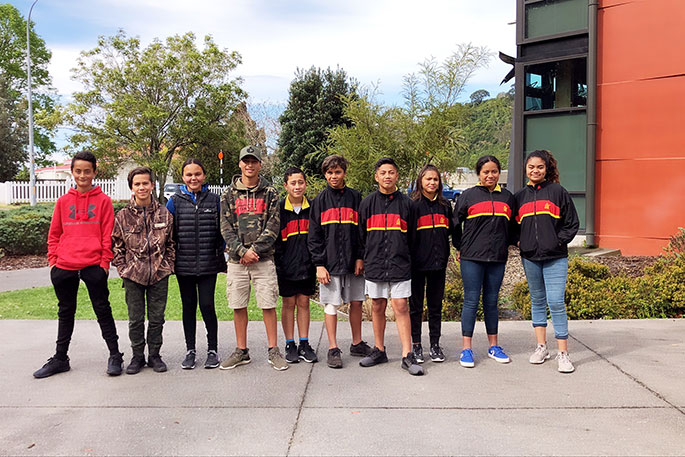Whakatāne technology hub Robopā is gearing up to put 12 primary-intermediate school teams through the wringer to find the first National Robotics Scrimmage champions.
A total of 24 schools battled it out in four regional challenges for a place in Robopā's two-day national finals in Whakatāne on October 31 and November 1.
The robotics challenge has been designed by the Te Whare Wānanga o Awanuiārangi technology hub to actively engage young Māori in teamwork, leadership, communication and STEM subjects – science, technology, engineering and maths.
Robopā project coordinator Thomas Mitai said the popularity of the robotics competition is growing beyond expectation.
'It is only the second year of competition, but the numbers tell the story. We started last year with six schools, this year there are 24 competing, we have a further 79 expressions of interest in future competitions, and every month we receive more.
'This demonstrates the power of this programme as a unique and engaging platform for learning. Robotics is a huge educational tool for experiential learning.
'It opens up the whole world of technology, design, innovation and programming, and competitive robotics adds an extra level of challenge, collaboration and fun.”
At the same time, rangatahi are learning other important skills such as problem-solving, critical and strategic thinking, and communicating – 90 per cent of which is expressed in te reo Māori, says Thomas.
'The ultimate aim is to nurture an interest in technology while highlighting the importance of working together, sharing thoughts and ideas, and holding on to our language."
The Year 7 and 8 primary-intermediate students must design and build a robot capable of solving specific problems and completing set tasks.
'The challenge for the finals is next-level,” he says. 'The tasks are more complex, and include picking up items, transporting them and climbing a structure. Individual team technical skills are tested on Day 1 of the competition, and on Day 2 strategy, communication and relationship skills are added to the mix, with each team required to form an alliance with another team in order to complete the task.”
The three top-placed teams from each of the regional finals will compete for the national title. They are: Bay of Plenty – Te Kura Kaupapa Māori o Waioweka (Pōrangi Pūkeko), Te Whata Tau o Pūtauaki (Robot Slayer), Te Whata Tau o Pūtauaki (Terminator); Gisborne region – Te Kura o Te Pāroa (O.G Wheke), Te Kura o Te Teko (Iratūmōana), Te Kura Kaupapa Māori o Kawakawa Mai Tawhiti (Ngā Uri o Poraurangi); Auckland region – Te Kura Kaupapa Māori o Te Kōtuku (Aina Iti), Kia Aroha/ Te Whānau o Tupuranga (Ngā Tangata), Te Kura Kaupapa Māori o Māngere (Tāniko); Northland – Te Kura Kaupapa Māori o Kaikohe (Rahiri Te Rangatira), Te Kura o Tautoro (Silly Salmons), Te Kura o Tautoro (Te Hikopiko).



0 comments
Leave a Comment
You must be logged in to make a comment.